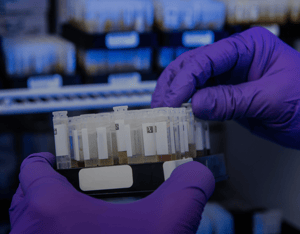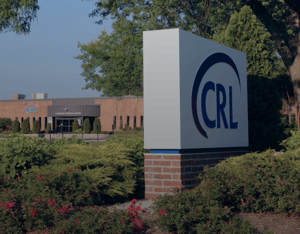Dr. Steven J. Rigatti, consulting medical director to CRL, discusses the novel use of the CRISPR technique and its potential impacts on the life insurance industry.
As reported in a recent NPR article, physicians at Vanderbilt University Medical Center have recently started a trial treating patients with sickle cell disease using a novel gene therapy approach. This approach makes use of the gene editing technique called CRISPR, and it is one of the first uses of this technique in humans.
CRISPR technology is both exciting and controversial — exciting because it has the potential to successfully treat notoriously difficult conditions, and controversial because it also has the potential to unleash genetically enhanced animals and humans into the biosphere, with consequences that are unpredictable and possibly catastrophic.
In this article, we review the basics of the CRISPR-Cas technique, and explore those applications which are either in current use or are closest to becoming a clinical reality.
CRISPR Basics
The CRISPR technique can be thought of as DNA scissors. There are many enzymes capable of slicing DNA, but CRISPR and its associated Cas protein is capable of being “programmed” to find a specific sequence in the genome and make its slice precisely in that location. It does this by using a piece of RNA which is synthesized to match the targeted sequence of DNA. Once the slice is made, a variety of actions may be taken. The targeted gene may be activated (CRISPRa), inactivated (CRISPRi), or may be edited by introducing a new sequence. Introducing a new sequence is a second, complex step and is therefore much more difficult and prone to error than is activating or inactivating a gene.
Early Trials: A Success Story in Sickle Cell Disease Treatment
Earlier this year, researchers at the Sarah Cannon Research Institute in Nashville treated a patient with sickle cell disease by means of an allogeneic stem cell transplant. That is, the patient’s own stem cells were collected from her blood, modified to express the gene for fetal hemoglobin, and then re-infused after she had chemotherapy to destroy her own bone marrow cells — which were producing the abnormal hemoglobin S — which causes sickle cell disease. Several months after engraftment, the patient continues to do very well and has had none of the intensely painful vaso-occlusive crises which were occurring 7 times per year on average, and nearly all her cells were expressing fetal hemoglobin.
Another patient with transfusion-dependent thalassemia was treated in the same manner and went from requiring over 16 blood transfusions per year to maintaining a normal hemoglobin level without transfusions.
Other Potential Targets for CRISPR Use
In many ways, hemoglobinopathies like sickle cell and thalassemia make ideal test cases for CRISPR, since we all carry a suppressed, but still serviceable gene for fetal hemoglobin. So, scientists need only reactivate that gene instead of attempting to edit or replace the defective adult hemoglobin genes carried by these patients. Nonetheless, there is a lot of research being done in the application of CRISPR to other single-gene disorders. Even if therapeutic strategies are not as clear as they are in hemoglobinopathies, CRISPR can still be a useful tool in the development of animal or tissue models of disease. For instance, hemophilia, Huntington’s disease, and chronic granulomatous disease (a type of severe hereditary immunodeficiency) have all seen advancements in the development of disease models in mice. Also, in cystic fibrosis (CF), scientists have shown that they can correct the function of the causative CFTR gene in organoids (small tissue models of CF-affected organs).
Additionally, CRISPR has significant potential to aid in the battle against cancer. Most directly, CRISPR can improve the CAR-T cell treatment strategy, which reprograms a patient’s immune system T-cells to target their cancer. Until now, viruses were used to introduce the necessary genes into T-cells, which is a non-targeted process prone to error. CRISPR can make this much more precise and reliable. It can also be used to reduce drug resistance which often occurs in recurrent cancer. Some researchers have even used CRISPR to target abnormal cancer fusion genes (which only occur in tumor tissue) and substitute a ‘suicide gene’ causing the tumor cells to simply die off.
Finally, like the case with genetic disorders, CRISPR can be used to create or refine animal and tissue models of cancer, giving researchers more accurate ways to develop new drug-based treatments.
Controversy Surrounding CRISPR Technology
As a powerful gene editing technology, CRISPR has understandably generated controversy. It is theoretically possible to use CRISPR to edit the genome of an embryo to express desirable characteristics such as intelligence, height or athleticism. These concerns were magnified in 2018 when it was announced that a pair of twins (nicknamed Lulu and Nana) had been born in China, and were the result of in vitro fertilization, followed by CRISPR-Cas9 editing of their genomes. The edit involved the CCR5 gene, which is the binding site of the HIV virus, and attempted to introduce the “del32” mutation which confers resistance to most forms of HIV. This was ostensibly done because the girls’ father is HIV positive. However, the mother is negative, and therefore there is no indication for HIV prevention even by the normal, drug-based, and highly effective means. This action was widely criticized, and several regulatory and oversight committees and agencies have stepped up their efforts to prevent any further editing of the human germ line.
What CRISPR Could Mean for Insurers
The impact of CRISPR on insurers will likely mirror the impact of other important medical developments. Specifically, CRISPR has the potential to lower the mortality risk of serious diseases like hemoglobinopathies, cystic fibrosis and certain cancers which are typically uninsurable. With more widespread successful use, these conditions may ultimately become insurable.
About the Author
Dr. Steven J. Rigatti is a consulting medical director with Clinical Reference Laboratory, with 12 years’ experience in the life insurance industry. He is the current chair of the Mortality Committee of the American Academy of Life Insurance Medicine.






